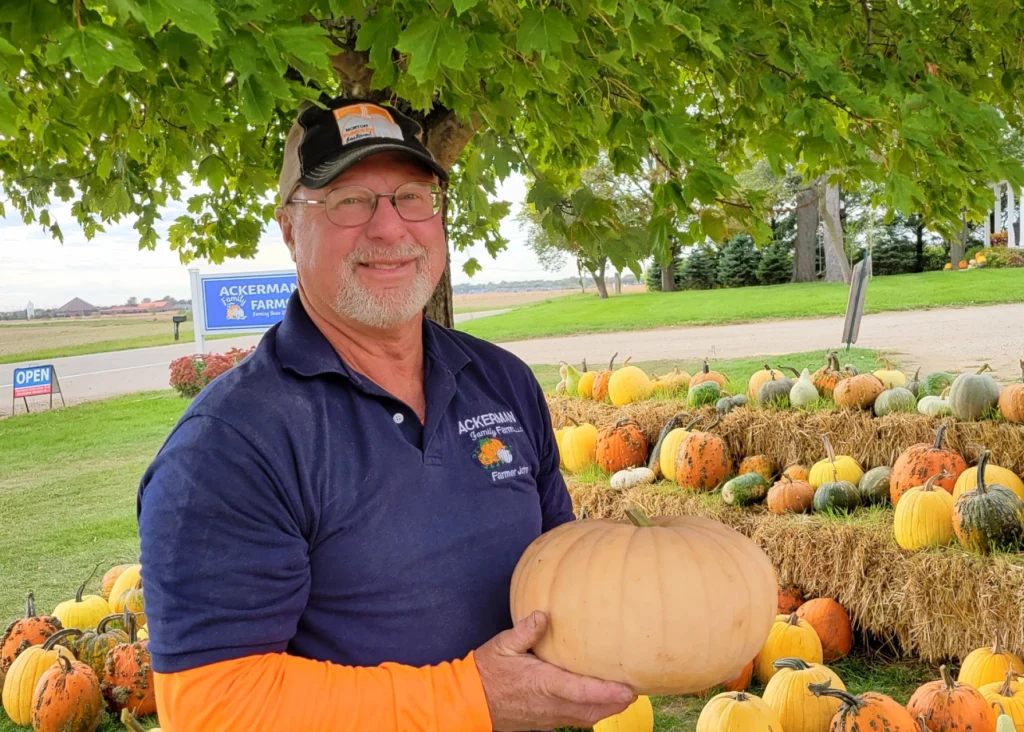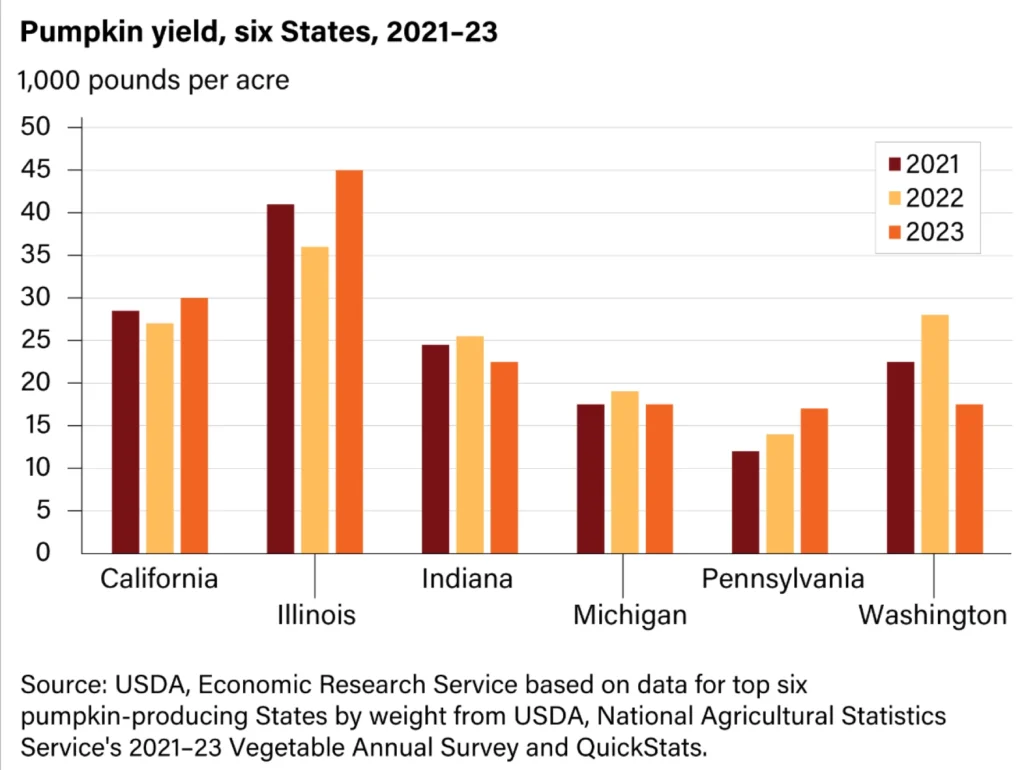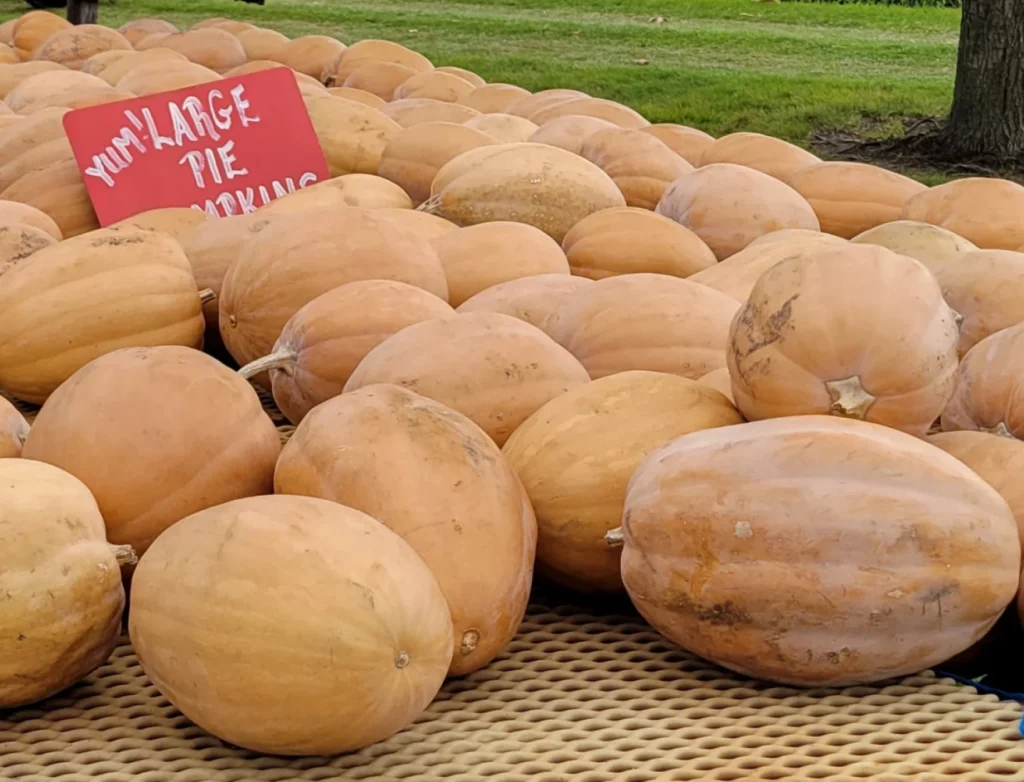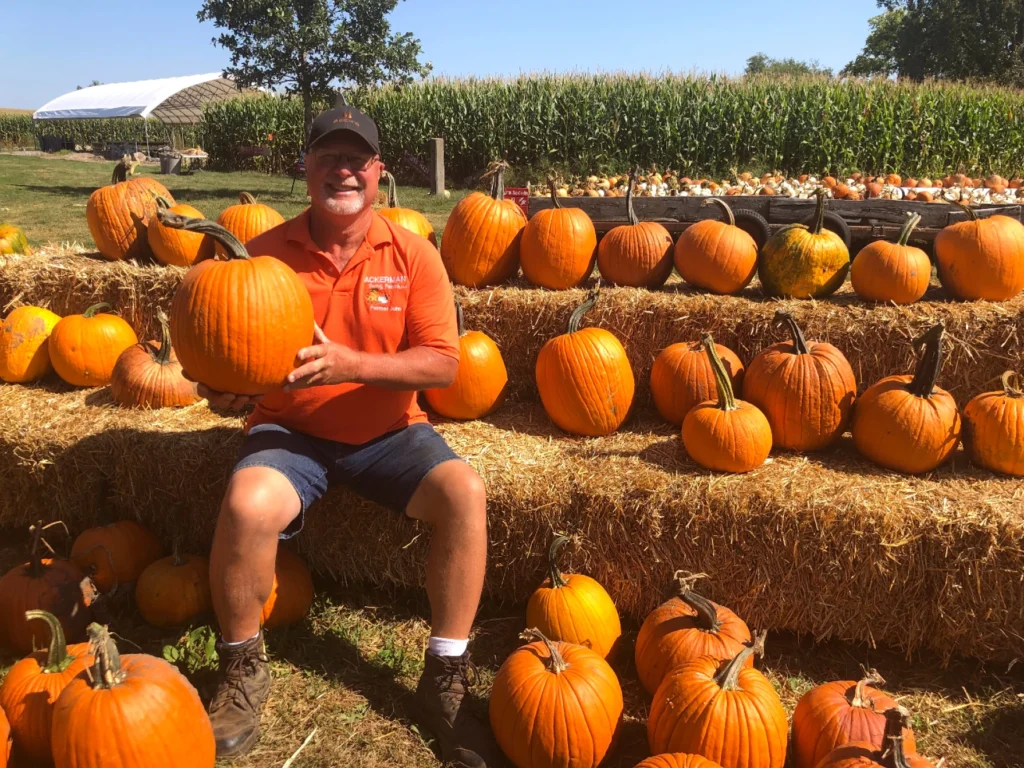The pumpkin pie Americans enjoy each Thanksgiving often comes from pumpkins grown near Morton, Illinois. The region accounts for more than 95% of canned pumpkin in the U.S.
On a cool and breezy fall morning, John Ackerman surveys a pumpkin field dotted by various shades of orange, white and yellow. He’s checking to see which are ready for picking.
While the growing season started out a little too wet, it’s going to be a good harvest.
“Normally, pumpkins like it relatively dry,” Ackerman said. “I’ve been amazed at how great this year was for pumpkins.”
Ackerman’s farm just east of Morton, Illinois, has been in his family since the early 1900s and was originally focused on livestock, small grains and row crops. In the 1980s, he shifted the primary focus to pumpkins after signing a contract with the nearby Libby’s plant in Morton.
“As soon as you start raising pumpkins, you fall in love with them,” he said. “It’s a great way of life.”
Morton is the epicenter for pumpkins in the U.S., providing up to 95% of the canned pumpkin in the country and 85% of the canned pumpkin worldwide. That’s due to the dark, rich soil in the area, along with the location in the “orange belt,” as Ackerman calls it. “You know, not too far north because they have too short a growing season,” he said, “but not so far south because they have so much humidity and diseases.”

Pumpkin capital of the world
The region around Peoria, Illinois, is home to two major pumpkin processing plants. There’s Seneca Foods is in Princeville, about 25 miles northwest of Peoria, and Libby’s in Morton, about 15 miles east.
“It’s a great story to tell,” said Chris Setti, the CEO of the Greater Peoria Economic Development Council. “As one of my colleagues once said, ‘Thanksgiving is brought to you by Greater Peoria.’”
According to the council’s figures, the Peoria region produces more than 220,000 tons of pumpkins each year.
“Not only is it important for the people that work and the people that farm pumpkin, and the people that can pumpkin, but it’s an important moniker,” Setti said. “We love being the ‘Pumpkin Capital of the World.’”
The pumpkins most often used in food like pumpkin pies aren’t actually orange. The Dickinson pumpkin variety – a cream-colored, oblong pumpkin – is what’s most often found in cans.
All those pumpkins are important for the local and state economy.
Illinois produced about 690 million pounds of pumpkin in 2023, more than the other five pumpkin-producing states combined, according to the U.S. Department of Agriculture.

Mohammad Babadoost is a professor of plant pathology at the University of Illinois, who specializes in vegetable and fruit crops. He says Illinois’ soil and climate is ideal for growing pumpkins, and that has a huge impact on the state’s agricultural economy.
“In Illinois, we grow at least three times more pumpkin than any other state,” Babadoost said. “One time I calculated, the pumpkin industry – in my calculation – is over a $200 million industry in Illinois.”
More than 90% of Libby’s pumpkins are grown within a 45-mile radius of its Morton facility, according to Rachelle Malin, a regional environmental specialist for Nestlé, Libby’s parent company. That proximity has allowed the company to establish a partnership with their farmers through the entire process.
“Many of them have been supplying for us for years, multi-generational farms,” she said.
The ag team in Morton helps growers identify the best fields, then provides proprietary pumpkin seeds and technical assistance.
“Once the seeds are planted, the ag team works with growers to continuously monitor that soil health, climate and our pumpkins throughout the growing season and harvest,” Malin said.
The company is also focused on helping farmers incorporate more environmentally friendly practices onto their fields, Malin said, such as cover crops, reduced tillage and more precise fertilizer application.

‘Pumpkin is about everything’
Next year will mark 100 years since Libby’s opened its plant in Morton.
“It’s very important,” said Mayor Jeff Kaufman. “They have 200 employees when they’re canning and everything, and they support our stores and shops and gas stations.
Kaufman said the plant is the largest customer for both the municipal gas and water utilities, helping sustain the town’s infrastructure. And there’s also a tourism component. Morton’s annual Pumpkin Festival attracts 75,000 people over four days each September.
“I walk the parade every year, and I throw out 330 pounds of candy. The parade route has grown at least four houses longer than it has been the last few years, and people are several rows deep on each side,” he said.
The mayor said they recently painted one of the town’s water towers with a new pumpkin logo, and they fielded a request to do the same with a second water tower.
“Pumpkin is about everything in Morton,” he said.
Not every pumpkin farmer is selling to the canning plants.
A few miles west of the town, Nic Roth raises pumpkins on more than 20 acres. The Roth Pumpkin Patch has been providing mostly ornamental pumpkins “to get people in the mood for fall” since 2016, Roth said.
He grows somewhere around 40 different varieties that then go up for sale at his on-site stand. The pumpkin patch also provides hay rides and a corn maze, as well as a shop.
“We’ve got some farm animals out here, a few goats, a few sheep, some chickens. And we just have some games, some slides,” Roth said. “It’s for families to have a good time out here.”

John Ackerman sometimes sells his pumpkins to Libby’s, but he raises 160 pumpkin varieties on his farm – many of them meant for those that visit his farmstand over 10 weeks each fall. This year, he expects to hand pick roughly 30,000 pumpkins.
“There’s something iconically beautiful about looking over a pumpkin field when they’re ripe,” he said. “It just shows the fruits of your labor.”

